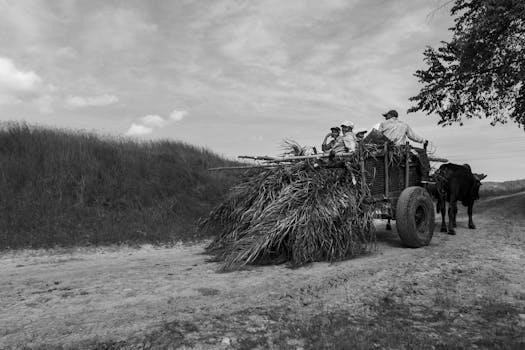
-
By:
- ophelia
- No comment
livestock judging manual
Article Plan⁚ Livestock Judging Manual
This manual provides a comprehensive guide to livestock judging, covering breed standards, conformation, muscle assessment, and structural soundness. It also offers practical judging techniques, advice on developing a keen eye, and strategies for delivering compelling oral reasons. Further resources are included.
Livestock judging is the evaluation of animals against a specific ideal, considering factors like conformation, muscle, and structural correctness. It’s a crucial skill for producers, breeders, and industry professionals, influencing breeding decisions and market value. This manual serves as an introductory guide to the principles and practices of livestock judging, aiming to equip readers with the fundamental knowledge needed to assess livestock effectively.
The core purpose of livestock judging extends beyond mere aesthetic appreciation; it’s about identifying animals that possess the genetic potential to excel in production traits. For example, a dairy cow might be judged on her udder capacity and teat placement, directly impacting milk yield and ease of milking. Similarly, a market steer is evaluated for muscle mass and fat distribution, reflecting its potential carcass value.
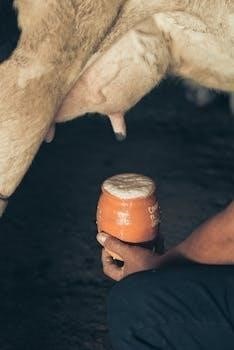
Effective livestock judging requires a combination of knowledge, observation, and critical thinking. It involves understanding breed standards, recognizing desirable and undesirable traits, and prioritizing characteristics based on their economic importance. This manual will delve into these aspects, providing a structured approach to learning the art and science of livestock judging.
Furthermore, livestock judging competitions provide invaluable learning experiences, allowing individuals to hone their skills and test their knowledge against their peers. These competitions simulate real-world scenarios, fostering decision-making abilities and communication skills, particularly through the delivery of oral reasons, which will be addressed later in this manual.
Understanding Breed Standards
Breed standards serve as the foundational blueprint for evaluating livestock. They are detailed descriptions outlining the ideal characteristics for a specific breed, encompassing physical traits, temperament, and performance indicators. Comprehending these standards is paramount for accurate and effective livestock judging, providing a consistent benchmark for comparison.
Each breed association establishes its own unique standard, reflecting the breed’s history, purpose, and desired traits. These standards are not arbitrary; they are often based on years of selective breeding and careful observation, aiming to optimize the breed’s performance in specific environments or production systems. For instance, a breed standard for a beef breed might emphasize muscling and growth rate, while a dairy breed standard would prioritize milk production and udder conformation.
Breed standards typically address various aspects of the animal’s anatomy, including head shape, body structure, leg conformation, and coat characteristics. They may also specify acceptable color patterns, horn shapes, and other breed-specific traits. These standards are often visually represented through breed-specific illustrations or photographs, providing a clear visual guide for judges and breeders.
It’s crucial to remember that breed standards are not static; they can evolve over time as breeders strive to improve their animals and adapt to changing market demands. Therefore, staying up-to-date with the latest breed standards is essential for maintaining accuracy and consistency in livestock judging. Furthermore, understanding the rationale behind specific aspects of the breed standard allows for a more nuanced and informed evaluation of individual animals.
Evaluating Conformation
Conformation refers to the overall structural correctness and balance of an animal. It’s a crucial aspect of livestock judging because it directly impacts the animal’s longevity, productivity, and overall well-being. A well-conformed animal is more likely to move efficiently, withstand the stresses of production, and remain healthy throughout its life.
Evaluating conformation involves assessing various body regions and their relationship to one another. This includes examining the animal’s topline, underline, shoulder angle, hip structure, and leg placement. Judges look for a smooth, balanced appearance, with all body parts blending harmoniously. Any deviations from ideal conformation can indicate potential weaknesses or predispositions to certain health problems.
For example, a steep shoulder angle can restrict the animal’s movement and increase the risk of lameness. Similarly, a weak topline can indicate a lack of structural integrity, potentially affecting the animal’s ability to carry weight or withstand the rigors of breeding. Judges also pay close attention to the animal’s feet and legs, ensuring that they are properly aligned and structurally sound.
Furthermore, evaluating conformation considers the animal’s breed and intended purpose. The ideal conformation for a dairy cow will differ from that of a beef steer, reflecting their distinct production goals. Dairy cows, for instance, require strong, well-attached udders and efficient locomotion, while beef steers need ample muscling and a desirable carcass composition.
Ultimately, evaluating conformation is a holistic process that requires a keen eye and a thorough understanding of anatomy and breed standards. It’s about identifying animals that possess the structural attributes necessary for optimal performance and longevity within their respective production systems.
Assessing Muscle and Volume
Assessing muscle and volume is critical in livestock judging, particularly for meat-producing animals. Muscle refers to the quantity and distribution of lean tissue, while volume describes the overall body capacity and dimension. These factors significantly influence carcass yield, meat quality, and overall market value.
Muscle is evaluated by observing the animal’s shape and contour, paying close attention to areas such as the loin, rump, and stifle. Judges look for thickness, width, and depth, indicating a well-developed musculature. A heavily muscled animal will exhibit a pronounced bulge in these regions, suggesting a high proportion of lean meat.
Volume, on the other hand, is assessed by considering the animal’s overall size and capacity. This includes evaluating the animal’s rib shape, body depth, and width throughout the chest and midsection. Animals with greater volume tend to have larger internal organs and a greater capacity for feed intake, which can contribute to faster growth rates and improved performance.
However, it’s important to note that muscle and volume should be evaluated in conjunction with other traits, such as conformation and structural soundness. An animal with excessive muscle but poor conformation may be prone to lameness or other health problems. Similarly, an animal with excessive volume but insufficient muscling may have a lower carcass yield and reduced market value.
Breed standards also play a role in assessing muscle and volume. Different breeds have different ideal muscle patterns and body types. For example, some breeds are known for their heavy muscling, while others are valued for their overall volume and growth potential. Judges must be familiar with the breed standards and evaluate animals accordingly.
Ultimately, assessing muscle and volume is about identifying animals that possess the optimal balance of these traits for their intended purpose. It’s about selecting animals that are likely to produce high-quality carcasses and maximize profitability for producers.
Evaluating Structural Soundness
Structural soundness is paramount in livestock judging, as it directly impacts an animal’s longevity, mobility, and overall productivity. It refers to the correctness of an animal’s skeletal structure, feet, and legs, ensuring they can withstand the stresses of movement and weight bearing.
Judges assess structural soundness by observing the animal’s stance, gait, and overall balance. The ideal animal stands squarely on all four legs, with proper angles and alignment in the joints. The pasterns should have adequate flexibility to absorb shock, while the hocks should be strong and well-defined.
The feet are also crucial. They should be appropriately sized, shaped, and have adequate heel depth. Cracks, overgrown hooves, or uneven wear can indicate underlying structural problems. Furthermore, the animal’s gait should be smooth, fluid, and free of any signs of lameness or stiffness.
Evaluating structural soundness requires a thorough examination of the animal from multiple angles. Observing the animal walking allows judges to assess its movement and identify any potential weaknesses in its structure. Furthermore, palpation can help detect subtle abnormalities in the joints or ligaments;
Structural weaknesses can lead to a variety of health problems, including lameness, arthritis, and reduced reproductive performance. Animals with poor structural soundness are more likely to be culled from the herd prematurely, resulting in economic losses for producers.
Breed standards also influence the evaluation of structural soundness. While the fundamental principles remain the same, different breeds may have slightly different conformation traits that are considered acceptable. Judges must be familiar with the breed standards and evaluate animals accordingly.
Ultimately, evaluating structural soundness is about identifying animals that are built to last. It’s about selecting animals that can remain productive and healthy for many years, contributing to the long-term profitability of the operation.
Practical Judging Techniques
Effective livestock judging relies on a combination of knowledge, observation, and systematic evaluation. Several practical techniques can enhance the accuracy and efficiency of the judging process. Firstly, develop a consistent approach. Start by observing the entire class or group of animals to get an overall impression.
Next, individually evaluate each animal, focusing on key traits such as conformation, muscle, and structural soundness. Use a scorecard or checklist to ensure that all essential aspects are considered. Scorecards provide a structured framework for recording observations and assigning scores to different traits.
It is also important to prioritize traits based on their economic importance and the specific goals of the judging scenario. For example, in market animals, muscle and leanness may be prioritized, while in breeding animals, reproductive traits and structural soundness may be more important.
Another valuable technique is comparative judging. Compare and contrast the animals in the class, identifying their strengths and weaknesses relative to each other. This helps to rank the animals accurately and make informed decisions.
Use your hands to palpate animals, assessing muscle and fat cover. This can provide valuable information that is not readily apparent through visual observation alone. Pay close attention to the animal’s gait and movement; Observe how it walks and stands to assess its structural soundness.
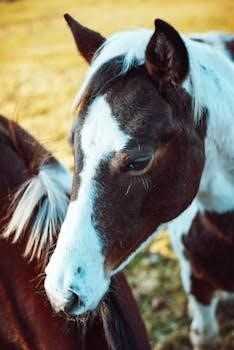
Take accurate notes throughout the judging process. Record your observations, scores, and rationale for each animal. These notes will be invaluable when formulating your oral reasons.
Finally, practice, practice, practice! The more you judge, the better you will become at identifying key traits, evaluating animals accurately, and making sound decisions. Attend judging contests, workshops, and clinics to hone your skills and learn from experienced judges.
Developing a Judging Eye
Developing a “judging eye” is crucial for accurate livestock evaluation. It’s the ability to quickly and accurately assess an animal’s strengths and weaknesses. This skill isn’t innate; it’s honed through practice and a deep understanding of animal anatomy, breed standards, and industry goals. Begin with a strong foundation in breed characteristics.
Study breed standards meticulously, understanding the ideal traits for each breed. Attend shows and sales to observe animals that exemplify these standards. Compare these animals to those that deviate from the ideal, noting the differences in conformation, muscle, and structural integrity. Consistent practice is essential. Regularly evaluate animals, even if it’s just a few in a pasture.
The more animals you assess, the better you become at recognizing subtle differences and identifying key traits. Seek feedback from experienced judges and breeders. Ask them to critique your evaluations and explain their reasoning. Their insights can be invaluable in refining your judging eye.
Attend judging clinics and workshops. These events provide structured learning opportunities, allowing you to practice your skills under the guidance of experts. Utilize technology to your advantage. Study photos and videos of livestock, paying close attention to detail. Many online resources offer virtual judging exercises, allowing you to practice from anywhere.
Focus on developing your observation skills. Pay attention to the animal’s overall balance, muscling, and structural correctness. Learn to quickly identify deviations from the ideal. Understand the relationship between form and function. Consider how an animal’s conformation affects its performance and longevity.
Be patient and persistent. Developing a judging eye takes time and effort. Don’t get discouraged if you don’t see results immediately. Continue to practice, learn, and seek feedback, and eventually you will develop the keen eye necessary for accurate livestock judging.
Giving Oral Reasons
Giving oral reasons is a critical component of livestock judging, allowing you to articulate your evaluation and defend your placing. It demonstrates your understanding of animal conformation and your ability to communicate effectively. Structure is key to delivering clear and persuasive reasons. Start with an introduction that states the class and your placing.
For example, “I place this class of Angus heifers 1-2-3-4.” Then, provide a grant statement explaining why you placed the top animal first. Focus on the superior traits of the animal, using precise and descriptive language. Avoid vague terms; instead, be specific about the animal’s strengths in terms of muscle, balance, and structure.
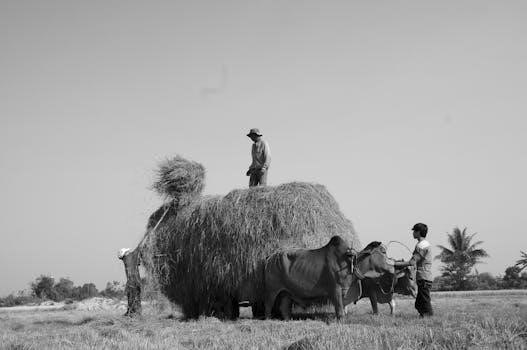
Next, offer a comparative statement, explaining why you placed the first animal over the second. Highlight the advantages of the first animal and the disadvantages of the second. Use comparative terms like “longer,” “deeper,” and “wider” to illustrate the differences. Transition smoothly between animals, providing clear explanations for each placing.
When discussing the middle pair, acknowledge the strengths of the lower animal while still justifying the higher placing. Use a “but” statement to transition from the strengths of the lower animal to the reasons for placing the higher animal above it. For the bottom pair, point out the faults of the bottom animal while acknowledging any strengths of the animal placed above it.
Conclude with a summary statement that reinforces your overall placing and highlights the key differences between the animals. Practice your delivery to ensure a confident and articulate presentation. Maintain eye contact with the judge, speak clearly and concisely, and use a professional tone. Record yourself giving reasons and critique your performance. Seek feedback from experienced judges to improve your delivery and content. Remember, clear, concise, and well-reasoned arguments are essential for effective oral reasons.
Resources and Further Learning
To enhance your livestock judging skills, numerous resources are available. Consider exploring online platforms like university extension websites, which often offer articles, videos, and interactive tools related to livestock evaluation. Many agricultural colleges and universities provide online courses or workshops focused on specific livestock species or judging techniques. These courses can offer a more structured and in-depth learning experience.
Attending livestock judging clinics and workshops is invaluable. These events provide hands-on experience, allowing you to evaluate animals under the guidance of experienced judges and receive immediate feedback. Check with local and national livestock associations for upcoming clinics and competitions. Participating in judging contests is another excellent way to hone your skills and test your knowledge against other enthusiasts.
Books and publications dedicated to livestock judging can offer detailed information on breed standards, conformation, and evaluation criteria. Look for resources from reputable agricultural publishers or livestock breed associations. Subscribing to industry journals and magazines can keep you updated on the latest trends and developments in livestock production and evaluation.
Networking with experienced judges and livestock producers is crucial for continuous learning. Seek opportunities to learn from their expertise and gain insights into their evaluation philosophies. Consider joining livestock breed associations or agricultural organizations to connect with other enthusiasts and professionals. Don’t hesitate to ask questions and seek advice from those with more experience.
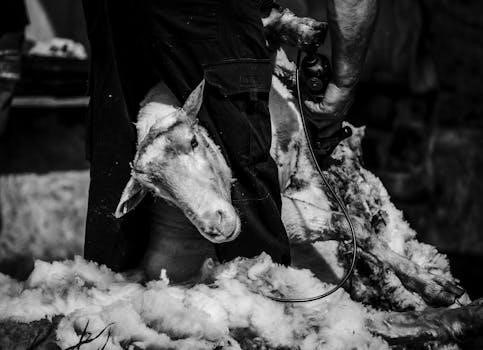
Finally, remember that continuous practice is essential for improving your judging eye. Regularly evaluate livestock, attend shows and sales, and compare your evaluations with those of experienced judges. Embrace opportunities to learn from your mistakes and refine your judging techniques over time. Consistent effort and a dedication to learning will help you become a skilled and confident livestock judge.